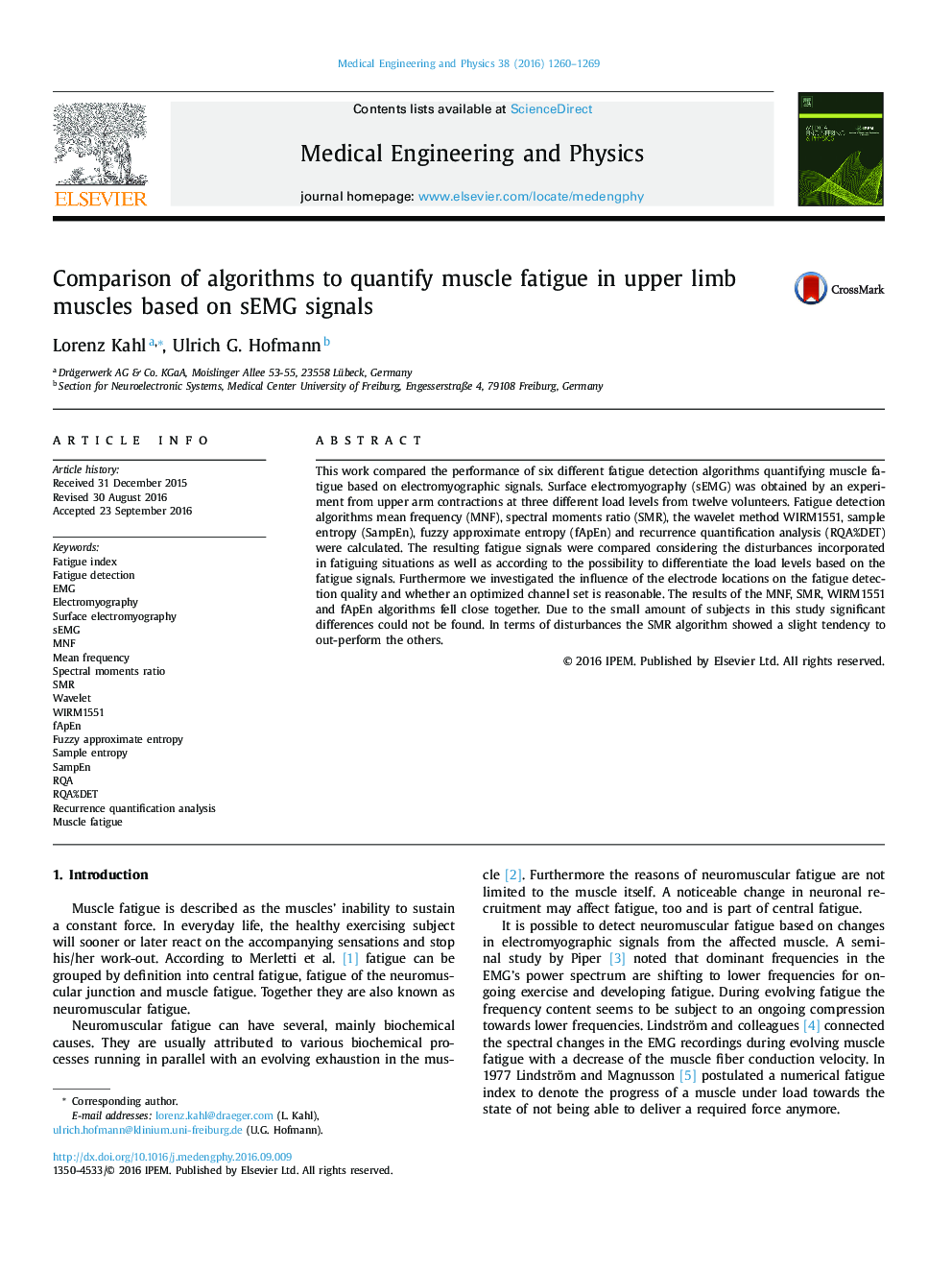| Article ID | Journal | Published Year | Pages | File Type |
|---|---|---|---|---|
| 5032843 | Medical Engineering & Physics | 2016 | 10 Pages |
â¢Accuracy to detect different degrees of fatigue is proposed as comparison criterion.â¢Spectral moments ratio yielded best detection quality in terms of disturbances.â¢Wavelet algorithms are also a good choice to detect different degrees of fatigue.
This work compared the performance of six different fatigue detection algorithms quantifying muscle fatigue based on electromyographic signals. Surface electromyography (sEMG) was obtained by an experiment from upper arm contractions at three different load levels from twelve volunteers. Fatigue detection algorithms mean frequency (MNF), spectral moments ratio (SMR), the wavelet method WIRM1551, sample entropy (SampEn), fuzzy approximate entropy (fApEn) and recurrence quantification analysis (RQA%DET) were calculated. The resulting fatigue signals were compared considering the disturbances incorporated in fatiguing situations as well as according to the possibility to differentiate the load levels based on the fatigue signals. Furthermore we investigated the influence of the electrode locations on the fatigue detection quality and whether an optimized channel set is reasonable. The results of the MNF, SMR, WIRM1551 and fApEn algorithms fell close together. Due to the small amount of subjects in this study significant differences could not be found. In terms of disturbances the SMR algorithm showed a slight tendency to out-perform the others.
